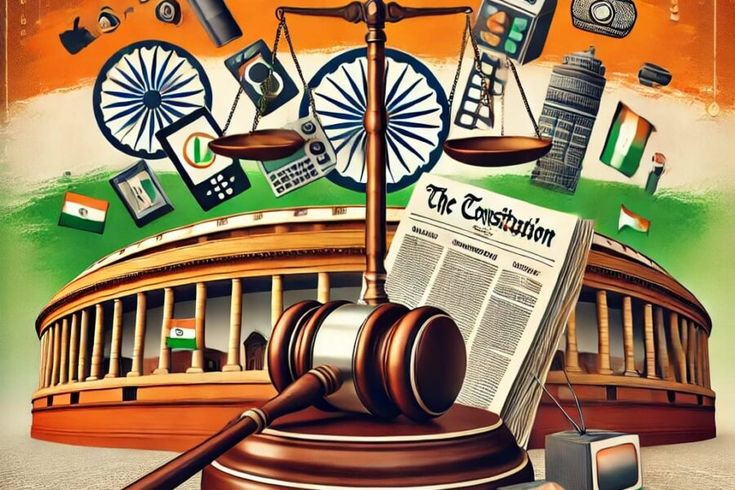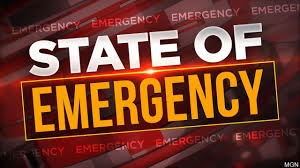Constitutional Framework and Importance
Centre-State relations in India form the backbone of the federal structure established by the Constitution. The framers envisioned India as a quasi-federal state with a strong unitary bias to maintain unity while accommodating diversity. Articles 245 to 255 and the Seventh Schedule of the Constitution provide a detailed scheme for the distribution of legislative, administrative, and financial powers between the Union and State governments.
The relationship between the Centre and the States is vital for smooth governance, national integration, and economic development. A well-functioning federal arrangement ensures that states can address local issues effectively while the Union maintains overall coordination and uniformity in national policies. The Indian model is often described as cooperative federalism, where both levels of government work together while respecting constitutional boundaries.
Legislative Distribution of Powers
The Constitution divides legislative powers between the Centre and the States through three lists in the Seventh Schedule: the Union List, State List, and Concurrent List.
- Union List (Article 246) – The Parliament has exclusive power to legislate on matters such as defense, foreign affairs, atomic energy, currency, and communication. States cannot make laws on these subjects.
- State List (Article 246) – State legislatures have exclusive authority over subjects like police, public health, agriculture, and local governance. This allows states to address regional issues effectively.
- Concurrent List (Article 246) – Both Parliament and state legislatures can legislate on subjects such as criminal law, marriage, education, and bankruptcy. In case of conflict, Union law prevails (Article 254).
Additionally, Article 248 gives the Union Parliament residuary powers to legislate on matters not enumerated in the lists, reinforcing the Centre’s role in maintaining national coherence.
Administrative Relations
The Indian Constitution ensures administrative cooperation and coordination between the Union and the States. Article 256 mandates that the States shall follow the directives of the Union for the maintenance of public order and implementation of laws. Article 257 authorizes the Union to give directions to states regarding the exercise of their executive powers in the interest of coordination and efficiency.
All-India Services, such as the IAS and IPS, play a key role in ensuring administrative continuity across both levels of government. These officers serve both the Union and the States, thereby bridging potential gaps and fostering coordination. Furthermore, the Sarkaria Commission (1983) recommended measures for better cooperation, emphasizing consultation and dispute resolution mechanisms to maintain harmonious Centre-State relations.
Financial Relations
Financial relations form a crucial aspect of Centre-State dynamics. Article 268 to 281 outlines the distribution of taxation powers and financial resources. The Union collects certain taxes like income tax, customs duties, and excise duties, while States levy taxes such as sales tax (now GST), stamp duty, and land revenue.
The Finance Commission, established under Article 280, periodically recommends the distribution of revenues between the Union and the States to ensure equity and financial stability. The Goods and Services Tax (GST), implemented in 2017, is a landmark reform demonstrating cooperative federalism, where the Centre and States jointly manage revenue collection and share resources transparently.
Role of Emergency Provisions
The Constitution provides the Union with powers to intervene in State matters under extraordinary circumstances. Articles 352, 356, and 360 allow the proclamation of National, State, and Financial Emergencies, respectively.
Article 356, the most debated provision, permits the President to assume control of a State if there is a failure of constitutional machinery. While intended as a safeguard, its misuse has historically led to political conflicts, with states being dismissed or brought under President’s Rule for political reasons rather than genuine constitutional failures. Judicial review, especially in S.R. Bommai v. Union of India (1994), has curtailed arbitrary use, reinforcing checks and balances in Centre-State relations.
Cooperative Federalism in Practice
Modern Indian governance emphasizes cooperative federalism, where both levels of government work together to implement policies. The GST Council is an example of a collaborative institution where Union and State representatives jointly decide tax rates and revenue sharing, ensuring uniformity while respecting state interests.
Similarly, disaster management, national infrastructure projects, and pandemic responses involve coordinated efforts between Centre and States. The National Disaster Management Authority and other institutional frameworks highlight the necessity of collaboration to address cross-border challenges efficiently. Cooperative mechanisms not only improve governance but also foster trust and reduce conflicts between the Union and States.
Judicial Oversight and Dispute Resolution
Disputes between the Centre and States are resolved through judicial intervention, primarily by the Supreme Court under Article 131. Issues often arise in legislative competence, financial allocations, or administrative directives. Landmark cases like State of West Bengal v. Union of India (1962) clarified the limits of Union intervention in State matters, emphasizing that federal principles must guide all actions.
The judiciary ensures that neither level of government encroaches on the powers of the other, maintaining the federal balance envisioned by the Constitution. Judicial review of emergency proclamations, financial disputes, and legislative conflicts has played a crucial role in sustaining Centre-State harmony over decades.
Challenges in Centre-State Relations
Despite constitutional mechanisms, conflicts persist. Issues such as uneven fiscal capacities, political rivalry, and differing regional priorities often strain relations. Misuse of Article 356 in the past, delays in release of central grants, and disputes over water sharing, as seen in interstate river conflicts, exemplify areas of contention.
However, institutional reforms, cooperative platforms, and judicial oversight have mitigated many disputes. The GST Council, Finance Commission, and Inter-State Council, recommended by the Sarkaria Commission, enhance collaboration while maintaining the federal balance. These measures ensure that Centre-State relations evolve constructively in response to India’s growing complexity.
Mnemonic to Remember Centre-State Relations in India
Use the mnemonic “FEDERAL COOP” to recall key aspects:
F – Federal structure with unitary bias
E – Emergency provisions (Articles 352, 356, 360)
D – Distribution of legislative powers (Union, State, Concurrent Lists)
E – Executive coordination (All-India Services, Articles 256, 257)
R – Revenue sharing via Finance Commission and GST
A – Article 131: Judicial dispute resolution
L – Legislative competence clearly defined in Seventh Schedule
C – Cooperative federalism in practice
O – Organizational mechanisms like Inter-State Council
O – Oversight by judiciary for maintaining balance
P – Political and financial collaboration to ensure harmony
About lawgnan
To gain a comprehensive understanding of Centre-State Relations in India, visit Lawgana.in and explore how the Constitution ensures a balanced federal structure through legislative, administrative, and financial mechanisms. Learn how cooperative federalism, emergency provisions, and judicial oversight shape India’s governance. Discover landmark cases, key articles, and institutional reforms like the Finance Commission and GST Council that uphold federal harmony. Stay informed about evolving Centre-State dynamics and their role in maintaining unity, democracy, and efficient governance in India—your complete legal insight hub at Lawgana.in.




